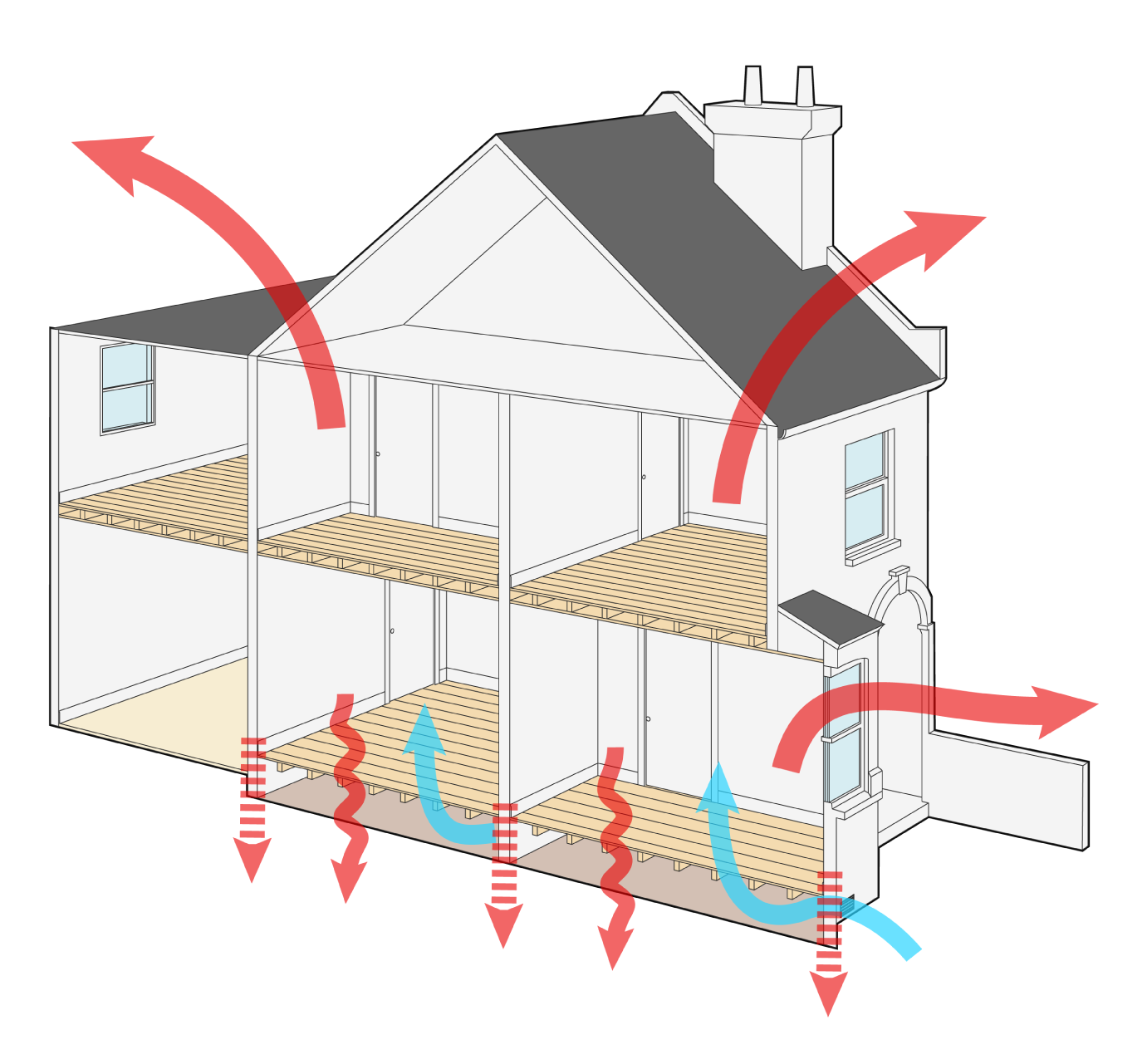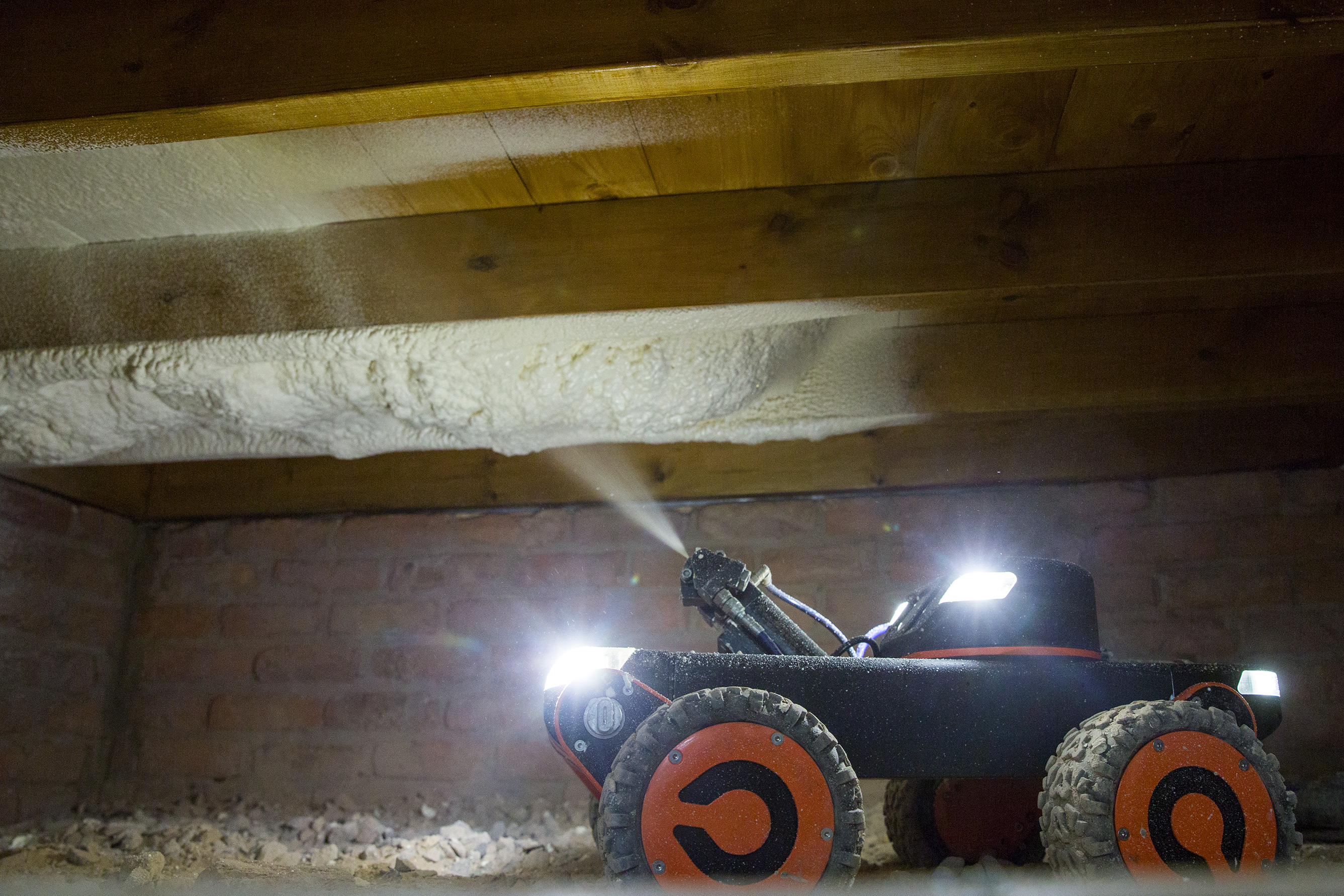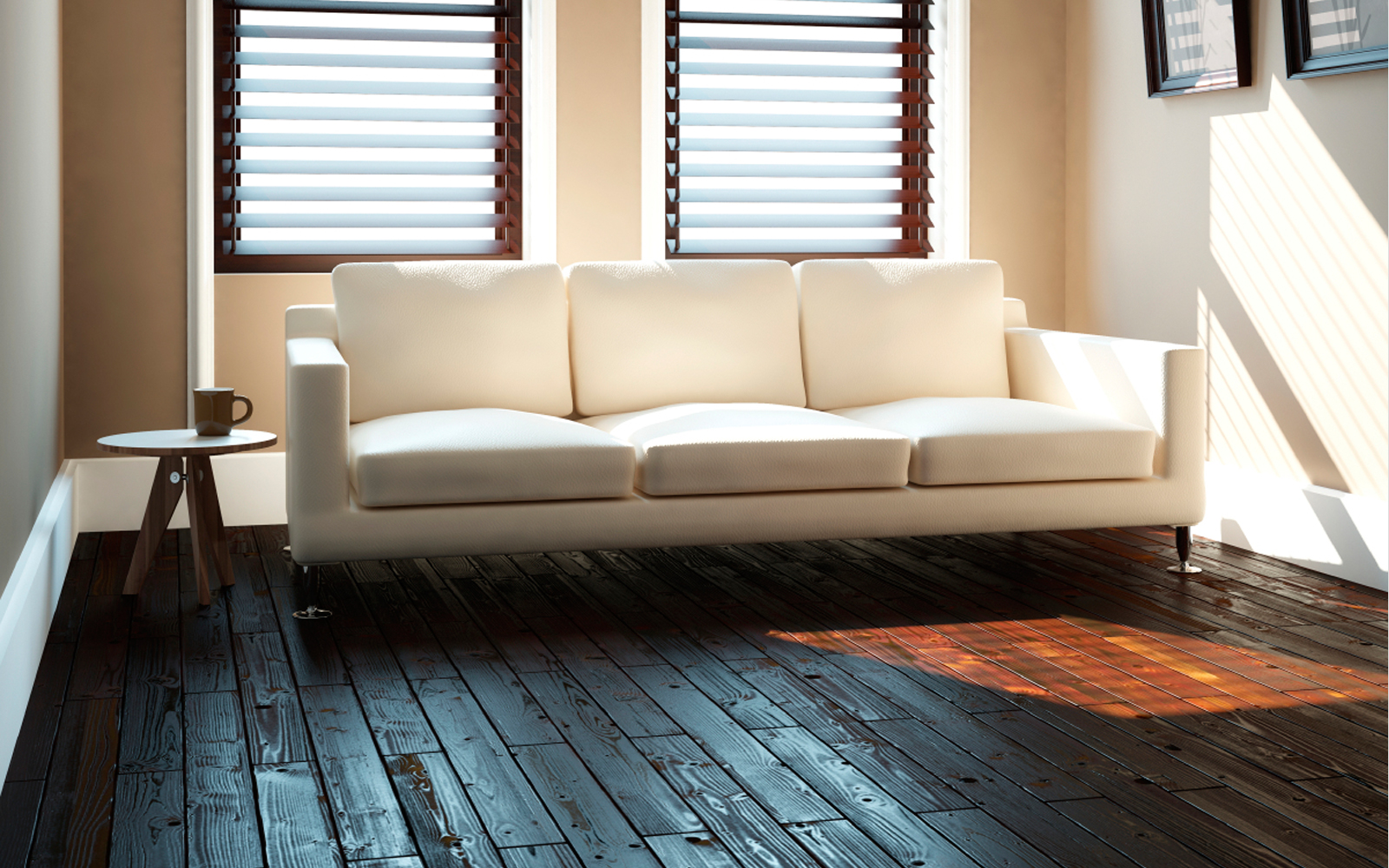What is the Best Insulation for Suspended Floors?
When it comes to home insulation, many homeowners tend to focus on insulating their walls and lofts and often forget about floors. While the majority of heat loss occurs through an uninsulated or poorly-insulated roof, did you know that an additional 20% of heat loss happens due to uninsulated floors? Suspended wooden floors, in particular, are a good example, as this type of construction uses an outdated ventilation system, letting in cold air, dust and mould from the void below, which creates uncomfortable draughts and uneven temperatures.
In this guide, we will explore some of the best insulation materials available for suspended floors and their benefits. We’ll cover some of the most common types of floor insulation materials, such as fibreglass and stone wool, as well as newer and non-disruptive options like spray foam insulation. So, whether you're renovating your home or looking to improve its comfort and energy efficiency, you'll have all the information you need to make an informed decision on the best insulation for your home.
Can you insulate a suspended floor?
Yes, you can insulate suspended floors, and doing so has numerous advantages for both homeowners and landlords. Suspended floors are commonly found in traditional Victorian homes or buildings and were constructed to provide an accessible space between the ground and the floor for proper airflow and ventilation. However, it can also be a source of unwanted draughts, cold spots, and mould growth if not properly insulated. This can result in significant heat loss, increased energy bills, and long-term health concerns for many homeowners and renters since suspended floors are still used in many homes across the UK, and are sometimes newly built when ground surfaces are uneven or damp.
Benefits of suspended floor insulation
There are numerous advantages to insulating a suspended floor, but most of its benefits can be broken down into four main categories: energy efficiency, cost-effectiveness, comfort, and noise reduction.
Greater energy savings and efficiency
One of the primary benefits of insulating a suspended floor is that you will notice an increase in energy efficiency in your home, which often leads to greater energy savings. By retaining heat that was previously lost through the crawl space, floor insulation can help improve your energy performance certificate (EPC) score and rating. In our case study of 180 homes, Q-bot underfloor insulation reduced heat loss by 77% and cold draughts by a third for the entire house, resulting in an average EPC improvement of 5 points across the board. This means greater energy efficiency by lowering the amount of energy required to heat your home, as well as reducing your energy bills and carbon footprint.
Cost-effectiveness
Suspended floor insulation is not only a great way to reduce energy costs and your impact on the environment, but it can also be cost-effective in the long run. While the initial cost of installation may seem high, the benefits of suspended floor insulation can last for many years without needing to be replaced. It can improve heat retention by up to 60%, which means that homeowners and landlords can save a significant amount on their energy bills in the long run.
In our case study, suspended floor insulation produced an average annual savings of £250 at 2022's energy price and an average cost of £695 per EPC point, making it one of the most cost-effective solutions when compared to other retrofit measures. This means you can expect a better return on your investment within a few years, depending on the size of the property, particularly with rising energy prices, which are expected to continue in the coming years.
Better comfort
Insulating a suspended floor can significantly improve the thermal comfort of your home. By reducing draughts and cold spots, underfloor insulation helps to maintain a more even temperature throughout the home, creating a more comfortable living environment. It also helps to reduce the need for additional heating and keeps floors warm underfoot, which is especially beneficial during the cold winter months. Besides, insulating suspended floors can improve airflow and ventilation, lowering the risk of damp conditions and mould growth in your home, which can be comforting if you have a family member with respiratory problems, such as asthma and allergies, or those with a weakened immune system.
Improved noise reduction
Another key benefit of underfloor insulation is an improvement in acoustic performance by reducing sound transmission between floors. Suspended floor insulation can help to absorb sound waves, reducing the amount of noise that travels through the floor and making the space quieter and more pleasant to be in. This is especially useful for families living in multi-story buildings or apartments, as well as landlords seeking to attract renters and buyers.
Types of materials you can use
There are several different types of insulation materials that can be used for suspended floors, each with its own set of advantages and disadvantages. In this section, we will explore all of the underfloor insulation options and their lambda values. This refers to the thermal conductivity of a material, or how well it conducts heat. Generally, the lower the lambda value, the better the material's insulation properties.
Stone wool (0.032-0.044 W/mK)
Stone wool is a popular insulation material made from molten rock, at a temperature of about 1600°, which is then spun into an intertwined fibrous texture (similar to how candy floss is produced). It is an excellent thermal insulator and also provides good sound absorption. Stone wool is non-combustible, making it a safe choice for underfloor insulation, and it is also resistant to moisture, mould and dust. However, it can be more expensive than some other insulation options, so it may not be the best choice for those on a tight budget.
Spray foam (0.015–0.028 W/mK)
Spray foam insulation is a versatile and non-conventional option for insulating suspended floors. It is applied as a liquid that expands to fill the space between the floor joists, creating an airtight seal over time. Polyurethane (PUR) is the most commonly used material in this type of insulation, which is made up of organic units linked together by carbamate (urethane) links. The density/hardness of the material can also vary depending on the isocyanate, polyol, or additives used during the manufacturing process.
Spray foam insulation is one of the best insulations for suspended floors as it has the lowest lambda value, resulting in excellent thermal insulation. Unlike traditional underfloor insulation materials, which can only increase your EPC rating by 1 or 2 SAP points, Q-bot's PUR foam can improve both the thermal performance and airtightness of your home, increasing your EPC rating by 2-12 SAP points. As a result, spray foam insulation often outperforms traditional floor insulation materials in raising your EPC rating. Besides, it is also the most cost-effective insulation material on the market, with an average cost of £695 per EPC point gained—this means better energy savings and a greater return on investment over time.
However, spray foam insulation requires professional installation because even small gaps of 1mm or less can allow for thermal bridging, resulting in reduced performance and lower energy savings than expected. You can learn more about the spray insulation process for suspended floors here.
Polyisocyanurate (0.023–0.028 W/mK)
Polyisocyanurate (PIR) is another type of rigid foam insulation, closely resembling PUR, but with an increased presence of methylene diphenyl diisocyanate (MDI). It also uses polyol derived from polyester rather than polyether polyol in the reaction process. This improves the thermal performance and fire resistance of this insulating material, making it ideal for high-rise residential buildings that often require higher fire safety standards. Nevertheless, PIR insulation requires professional installation, because it is non-permeable and exposure to moisture can damage the material, reducing its performance over time.
Sheep's wool (0.038 W/mK)
Sheep's wool is a 100% natural, eco-friendly insulation material that offers excellent moisture retention and acoustic performance. It is felted and breathable, helping to regulate humidity levels within the suspended floor space, and is also resistant to mould and pests. It is also naturally flame resistant and self-extinguishing due to its ability to absorb high levels of moisture without losing its insulation properties. Having said that, this material can be more expensive than other man-made fibres, and its thickness may not be compatible for some underfloor applications.
Wood fibre (0.038 W/mK)
Wood fibre insulation is made from timber waste and is another sustainable, environmentally-friendly option for suspended floor insulation. It is recyclable and compostable, and it also provides good thermal insulation and sound absorption. Wood fibre insulation is often treated with a fire retardant to improve its fire resistance. The quality of this material, however, may be subpar depending on where it is made, and it also needs thick layers of insulation to achieve good thermal efficiency.
Glass wool (0.032-0.044 W/mK)
Glass wool is another popular insulating material made using molten glass that is composed of 20%-30% recycled waste components. Its intertwined glass fibres contain small air pockets between the glass, giving it excellent thermal insulation and sound absorption properties. Glass wool is also coated with a fire-resistant resin during the manufacturing process, making it fireproof. But compared to some other insulating materials, it is less energy efficient and can also be more challenging to install, especially in complex flooring structures.
Is it worth insulating under a suspended floor?
In most cases, insulating under a suspended floor is a worthwhile investment if you want to improve the energy efficiency of your home and save money on your energy bills. Moreover, the benefits of improved energy efficiency, greater energy savings, increased comfort, and reduced noise transfer can all contribute to a comfortable living or working environment while also reducing your carbon footprint. Additionally, underfloor insulation can help protect against dampness and mould, prolonging the life of the floor and the building as a whole. If you're unsure whether your home has suspended floors, you can find out here.
The type of insulation material you use will, however, depend on your preferences, budget and the specific requirements of the suspended floor in question, because every home presents unique challenges when it comes to underfloor insulation. All in all, it is important to carefully consider different floor insulation options for suspended floors, as well as their respective pros and cons, before making your decision, as the best insulation for one may not be a fitting choice for another.




